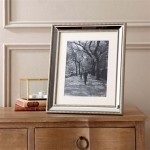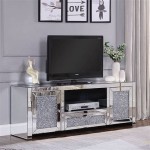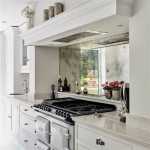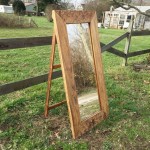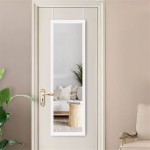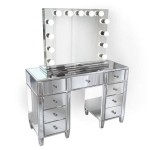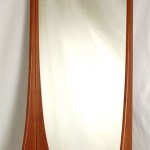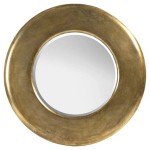Italian Decorative Wall Mirrors
Italian decorative wall mirrors represent a rich tradition of craftsmanship and artistic expression. From ornate Baroque designs to sleek, modern minimalism, Italian mirrors offer a diverse range of styles to complement any interior. This article explores the history, craftsmanship, styles, materials, and considerations for selecting and incorporating these elegant pieces into a home.
The history of Italian mirror making is deeply interwoven with the country's artistic heritage. Venice, in particular, became a renowned center for glassmaking during the Renaissance. Venetian artisans perfected techniques for creating clear, high-quality glass and developed elaborate methods for decorating mirrors with etching, gilding, and painting. This expertise established Italy's reputation for producing exquisite mirrors, which were highly sought after by European aristocracy and continue to be admired today.
Craftsmanship remains a defining characteristic of Italian decorative wall mirrors. Many are still produced using traditional techniques passed down through generations of artisans. These techniques often involve meticulous hand-carving of frames, delicate application of gold leaf or silvering, and intricate glasswork. The dedication to preserving these traditional methods ensures the enduring quality and artistic value of Italian mirrors.
Italian decorative mirrors encompass a wide spectrum of styles, reflecting various periods and artistic movements. Ornate Baroque mirrors, characterized by elaborate carvings, gilded details, and flowing lines, exude opulence and grandeur. These mirrors often feature intricate depictions of mythological figures, floral motifs, and other decorative elements. Rococo mirrors, a later development, maintain the ornate aesthetic but incorporate lighter, more whimsical designs. Neoclassical mirrors, inspired by ancient Greek and Roman art, emphasize symmetry, balanced proportions, and classical motifs.
The 20th century saw the emergence of more contemporary styles in Italian mirror design. Art Deco mirrors, with their geometric shapes, bold lines, and use of materials like chrome and mirrored glass, represent a departure from traditional ornamentation. Mid-century modern Italian mirrors often feature simpler, more organic forms and prioritize functionality alongside aesthetics. Contemporary Italian designers continue to push the boundaries of mirror design, experimenting with innovative materials and shapes while retaining the emphasis on quality and craftsmanship.
A variety of materials contribute to the beauty and durability of Italian decorative wall mirrors. Wood, often carved and gilded or painted, remains a popular choice for frames. High-quality glass, essential for a clear reflection, is a defining feature. Murano glass, with its vibrant colors and intricate patterns, is often incorporated into Venetian mirrors, adding a distinctive artistic touch. Other materials, such as metal, resin, and even leather, can be utilized in contemporary designs, offering a range of textures and finishes.
Selecting an Italian decorative wall mirror requires careful consideration of several factors. The size of the mirror should be proportionate to the wall space and surrounding furniture. The style of the mirror should complement the overall aesthetic of the room, whether it's a traditional, modern, or eclectic space. The frame material and finish should harmonize with other elements in the room, such as furniture, lighting fixtures, and artwork.
The placement of an Italian decorative wall mirror can significantly impact the ambiance of a room. Positioning a mirror opposite a window can amplify natural light and create a sense of spaciousness. Hanging a mirror above a fireplace mantel can serve as a focal point and enhance the architectural features of the room. Using a mirror in a hallway or entryway can create a welcoming and visually appealing transition between spaces.
Proper care and maintenance are essential for preserving the beauty and longevity of an Italian decorative wall mirror. Regular dusting with a soft cloth is recommended to prevent the buildup of dirt and grime. Avoid using harsh cleaning chemicals, which can damage the frame or the mirrored surface. For mirrors with intricate carvings or delicate finishes, professional cleaning may be advisable. Protecting the mirror from excessive moisture and direct sunlight can help prevent damage and discoloration.
Italian decorative wall mirrors represent more than mere functional objects; they are works of art that enhance the aesthetic appeal of any interior. From the historical significance of Venetian glassmaking to the contemporary innovations in design, Italian mirrors offer a timeless elegance and enduring quality. By carefully considering style, materials, placement, and maintenance, individuals can select the perfect Italian decorative wall mirror to complement their home and reflect their personal style.

Vintage Euro Marchi Italian Style Italy Mirror Decor Wall 24 5 X 9

Romantic Classic Italian Style Gold Leaf Mirror Made In

Italian Brass Decorative Wall Mirror 1960s For At Pamono

Crest Shaped Wall Mirror Italian Shield Aesthetic

Wall Mirrors Mirror Gold Design

Italian Brass Decorative Wall Mirror 1960s For At Pamono

Mid 20th Century Italian Gilt Wood Framed Gold Wall Mirror Moonee Ponds Antiques

Italian Rococo Mirror Wall Gilt Wood Style

Mid 20th Century Italian Gilt Wood Framed Gold Wall Mirror Moonee Ponds Antiques

Italian Wall Mirror Aesthetic Vanity Luxury

